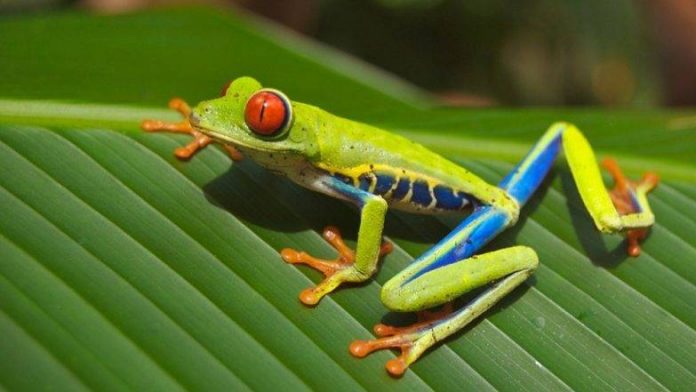For decades, a disease called chytridiomycosis has been devastating entire species of frogs, toads and salamanders.
Now, scientists have calculated how widespread that devastation is.
Altogether, chytridiomycosis, which is caused by chytrid fungus, has caused declines in at least 501 amphibian species, according to a study published Thursday in the journal Science. Of those, 90 species have gone extinct or are presumed extinct in the wild.
“We’ve known that chytrid’s really bad, but we didn’t know how bad it was, and it’s much worse than the previous early estimates,” study leader Ben Scheele, an ecologist at Australian National University, told National Geographic. “Our new results put it on the same scale, in terms of damage to biodiversity, as rats, cats and [other] invasive species.”
Biologists have reported the disappearance or decline of frog species since the 1950s. In 1990, the researchers discovered a global pattern of increasing unexplained frog declines, according to a discussion of the new study, but they didn’t know the cause.
An international team of scientists discovered amphibian chytrid fungus in 1998 and found that it caused frog declines in Australia and Central America.
More than 10 years later, researchers learned how the fungus kills. It attacks the animals’ skin, which is how they breathe and regulate water levels, according to National Geographic. Infections spread until the frog or salamander dies from cardiac arrest.
Scientists think the lineage of the chytrid fungus behind the declines once crossed with another lineage and created a more harmful hybrid, the Washington Post reports. The hybrid has easily spread as people transported infected amphibians in the global pet trade.
Herpetologist Jonathan Kolby, one of the study’s authors, told the Post, “It’s a staggering thing to consider. We’ve never before had a single disease that had the power to make multiple species extinct, on multiple continents, all at the same time.”
Kolby and the study’s other authors say governments need to further restrict the global trade of wild amphibians or come up with better screening methods.
“Chytrid fungus is the most destructive pathogen ever described by science – that’s a pretty shocking realization,” Wendy Palen, a biologist at Simon Fraser University in British Columbia, told National Geographic.
There is a glimmer of hope. Sixty of the 501 species have shown some signs of recovery, though those have mostly been in individual populations.








